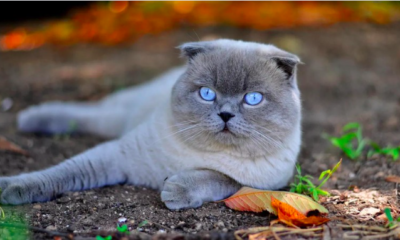Cats
Purring Through the Ages: 10 Long-Lived Cat Breeds for Feline Enthusiasts
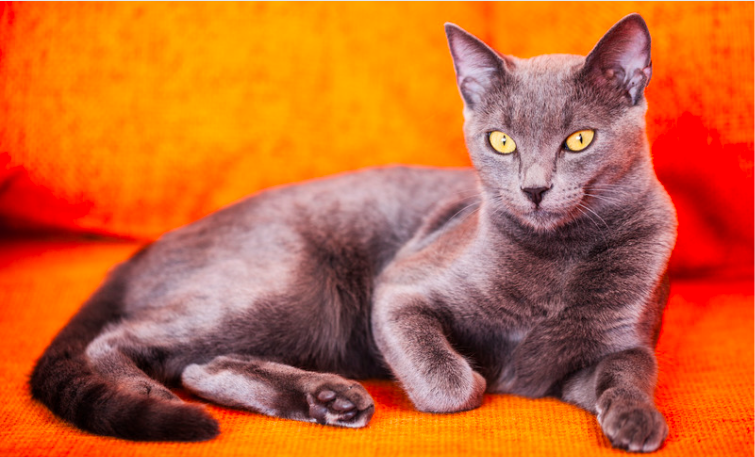
Purring Through the Ages: 10 Long-Lived Cat Breeds for Feline Enthusiasts
When it comes to feline companions, the love and joy they bring into our lives are immeasurable. Cat enthusiasts adore their furry friends, and it’s natural to want your beloved cat to be part of your life for as long as possible.
The good news is that some cat breeds are known for their longevity, promising years of purrs and cuddles.
In this comprehensive guide, we’ll explore the top 10 long-lived cat breeds, sharing insights into their characteristics, care, and the secrets to ensuring a happy, healthy, and extended life for your feline friend.
Origin and History of Maine Coon: The Gentle Giant
The Maine Coon cat, often referred to as “The Gentle Giant,” is a remarkable feline breed known for its impressive size, friendly nature, and extraordinary longevity.

If you’re seeking a feline companion that combines the qualities of a loyal friend and a beautiful beast, the Maine Coon might be the perfect choice.
Origins and Appearance
Hailing from the rugged state of Maine, these cats have a history as fascinating as their personality. While their exact origin is shrouded in mystery, they’re believed to be a product of natural selection, evolving to adapt to the harsh Maine winters.
The Maine Coon boasts a distinctive appearance. These cats are large, with sturdy, muscular bodies, and sport an elegant semi-long coat that can be found in a variety of colors and patterns.
One of their most recognizable features is their tufted ears, which give them a wild and regal look.
A Gentle and Friendly Nature
The Maine Coon’s friendly disposition is perhaps its most endearing quality. They are known for their affectionate nature, often forming strong bonds with their human family members.
Unlike some cats, Maine Coons are generally not aloof or independent. They enjoy being a part of the family activities and might even follow you around the house, providing you with constant companionship.
Remarkable Longevity
One of the most intriguing aspects of the Maine Coon breed is its longevity. These cats often have a life expectancy of 15 years or more when provided with proper care.
This means you’ll have the privilege of enjoying their company for an extended period, making them a beloved member of your household for many years to come.
Caring for Your Maine Coon
To ensure your Maine Coon’s longevity, it’s crucial to provide them with the right care.
This includes a balanced diet, regular exercise to maintain their large frame, and routine veterinary check-ups to catch any health issues early.
Their semi-long fur also requires regular grooming to prevent matting and hairballs.
Origin and History of Siamese: The Talkative Companion
The Siamese cat, often referred to as “The Talkative Companion,” has a captivating history that mirrors its engaging and vocal personality.

Let’s embark on a journey to explore the origins and rich history of this beloved feline.
Ancient Origins
The Siamese cat’s origins can be traced back to the ancient kingdom of Siam, now known as Thailand. This breed’s presence in Siam dates as far back as the 14th century, where they were cherished by royalty and monks.
Their striking blue almond-shaped eyes, sleek coat, and vocal nature made them highly sought after.
Arrival in the West
The Siamese cat made its debut in the Western world in the late 19th century. These regal felines were brought to England by British Consul-General Owen Gould.
The cats, Pho and Mia, became the first Siamese cats in the Western world. Their exotic looks and distinct vocalizations quickly captured the imagination of cat enthusiasts.
A Royal Welcome
The Siamese cats were a sensation in England, thanks in part to their remarkable appearance and chatty disposition. Queen Victoria herself took a keen interest in the breed, further elevating its status among cat lovers.
The cats’ striking, seal-point coloration and intense blue eyes became iconic traits of the Siamese.
Official Recognition
The breed was officially recognized in the United States in the early 20th century. The Siamese quickly gained popularity for its social and extroverted nature.
Its habit of “talking” to its human companions with a distinctive and melodious voice further solidified its reputation as “The Talkative Companion.”
Captivating Personalities
Siamese cats are celebrated for their vocal and interactive personalities. They thrive on human interaction and often engage in lively conversations with their owners. These cats form strong bonds with their families and relish being in the center of attention.
A Modern Icon
Today, the Siamese cat remains one of the most iconic and beloved cat breeds worldwide. They are known for their slender, graceful bodies, striking color points, and, of course, their ability to express themselves vocally.
Siamese cats continue to enchant people with their sociable and playful nature, making them cherished companions for those who appreciate their talkative charm.
Origin and History of Burmese: Elegant and Long-Lived
The Burmese cat, often described as “elegant and long-lived,” is a breed with a rich and storied history, characterized by its striking appearance, charming personality, and impressive longevity. Let’s delve into the origins and history of this remarkable feline.

Ancient Beginnings
The origins of the Burmese cat can be traced back to Burma (now Myanmar), where it was considered a sacred companion to Burmese temple priests.
These cats were revered for their graceful presence and were believed to bring good fortune to those who cared for them. This ancient lineage contributes to the breed’s aura of elegance and mystique.
Arrival in the West
The Burmese made its debut in the Western world in the early 20th century. Dr. Joseph Thompson, a military doctor stationed in Burma, is credited with bringing the first Burmese cat to the United States.
This single cat, named Wong Mau, would become the foundation for the Burmese breed as we know it today.
A New Breed Emerges
Wong Mau was initially classified as a Siamese cat due to her coat color, but her unique appearance and distinct personality traits led breeders to recognize her as a separate breed.
Her striking, rich sable coat and vibrant golden eyes set the standard for the Burmese’s appearance. The breed was officially recognized by the Cat Fanciers’ Association (CFA) in 1936.
Cherished Companions
Burmese cats quickly won the hearts of cat enthusiasts and pet owners alike. They are celebrated for their elegant and compact build, strikingly glossy coat, and captivating eyes.
While their appearance is undoubtedly captivating, it is their affectionate and social nature that truly endears them to those who share their lives with these felines.
Longevity and Vitality
The Burmese breed is renowned for its remarkable longevity. With proper care and a loving home, Burmese cats often enjoy a lifespan that exceeds 15 years.
This longevity is a testament to their robust health and well-being. They remain active and vibrant well into their senior years, making them cherished family members for an extended period.
Origin and History of Russian Blue: The Quiet Perfection
The Russian Blue, often referred to as “the quiet perfection” among cat enthusiasts, is a breed steeped in history and elegance.

This enigmatic feline has a rich origin story that dates back centuries, reflecting both its aristocratic past and its modern reputation for calm and gentle companionship.
A Mysterious Arrival
The Russian Blue’s precise origin remains shrouded in mystery, but its early records suggest that it was first introduced to Europe from the port of Arkhangelsk in Russia.
As the breed’s name suggests, it hails from Russia, but it’s not entirely clear whether it originated there or elsewhere. Its arrival in Europe is thought to have been facilitated by sailors and traders in the late 19th century.
Aristocratic Beginnings
In the early years, Russian Blues were cherished by Russian czars and the Russian aristocracy. These regal cats were kept for their striking appearance, which included a dense, bluish-gray coat, and their enchanting emerald-green eyes.
The breed quickly gained favor within the royal courts, and it wasn’t long before they were considered a symbol of prestige and nobility.
Wars and Survival
The breed faced significant challenges during the early 20th century due to the turmoil of World War I and the Russian Revolution.
Many Russian Blues were lost during this period, but dedicated breed enthusiasts in Europe and the United States worked diligently to preserve the breed.
They faced the daunting task of rebuilding the Russian Blue population, which had been nearly eradicated in its homeland.
A Quiet and Gentle Nature
The Russian Blue is renowned for its calm and gentle disposition, an attribute that has endeared it to countless cat lovers worldwide.
These cats are known for their reserved nature, intelligence, and their strong bonds with their human companions. While they may be shy around strangers, they are incredibly affectionate and loyal to those they trust.
Recognition and Popularity
The breed’s unique features, such as its striking bluish-gray coat and vibrant green eyes, contributed to its recognition by cat associations and enthusiasts.
In the United States, the Russian Blue was officially recognized by the Cat Fanciers’ Association (CFA) in 1949. Today, it is a beloved breed among cat enthusiasts for its beauty, serene personality, and adaptability to family life.
Origin and History of Ragdoll: The Laid-Back Beauty
The Ragdoll, often referred to as “The Laid-Back Beauty,” is a captivating feline breed known for its striking appearance and gentle temperament. Let’s delve into the origin and rich history of this enchanting cat.

The Birth of a Breed
The story of the Ragdoll begins in the early 1960s in Riverside, California. A woman named Ann Baker, an avid cat enthusiast, is credited with developing this unique breed.
The Ragdoll’s foundation cats, Josephine and Daddy Warbucks, were feral strays that Ann Baker adopted. These cats became the ancestors of the Ragdoll breed.
Mystery and Controversy
Ann Baker’s role in the breed’s creation is marked by controversy. She maintained strict control over the breed and even trademarked the name “Ragdoll.”
Despite the controversy, breeders worked diligently to develop the Ragdoll into the lovable and laid-back cat we know today.
Striking Appearance
Ragdolls are known for their large size, striking blue eyes, semi-longhair coats, and colorpoint patterns. The breed’s name, “Ragdoll,” is inspired by their tendency to go limp when picked up, much like a child’s soft, huggable doll.
Their coat is soft and silky, requiring regular grooming to maintain its beauty.
A Gentle Giant
One of the defining features of the Ragdoll breed is their gentle and docile nature. They are known for their affectionate and people-oriented personalities.
Ragdolls enjoy human company and are often content to be cradled and cuddled, which is a testament to their laid-back temperament.
Official Recognition
In the 1960s and 1970s, the Ragdoll breed began to gain recognition and acceptance from cat registries. Ann Baker’s strict breeding guidelines gave way to more standardized breeding practices.
This allowed the Ragdoll’s charming characteristics to shine through consistently.
Beloved Companions
Today, Ragdolls are cherished companions in countless households. They are known for their loving and social nature.
Ragdolls often follow their human family members around the house, providing company and affection.
Origin and History of Oriental Shorthair: The Playful Survivor
The Oriental Shorthair, often described as “The Playful Survivor,” is a remarkable feline breed with a history as intriguing as its name suggests. Let’s delve into the origin and captivating history of this lively and enduring cat.

From Siam to the World
The Oriental Shorthair’s origins can be traced back to the Siamese cat, one of the most renowned and ancient feline breeds.
While Siamese cats were the primary foundation for the breed, breeders began to diversify by introducing other breeds into the bloodline, creating a distinctive, long and slender body type.
The Exotic Expansion
In the mid-20th century, breeders set their sights on enhancing the Siamese breed’s diversity. They began introducing new coat colors and patterns, giving rise to the Oriental Shorthair’s striking variety of appearances.
The breed includes a spectrum of colors, including solid, bi-color, and even patterns like tortoiseshell.
Triumph Over Challenges
The Oriental Shorthair breed encountered several challenges during its development. A significant setback was World War II, which disrupted breeding programs.
However, determined breeders worked tirelessly to ensure the breed’s survival. Their efforts are why the breed is often described as the “Playful Survivor.”
Playful and Vocal
Oriental Shorthairs are renowned for their active, playful, and talkative nature. They are among the most vocal of all cat breeds, with a wide range of vocalizations to express their needs and desires.
These cats are intelligent and enjoy interactive play with their human companions.
Endearing Companions
Oriental Shorthairs have become beloved companions for countless families around the world. Their playful and affectionate personalities make them wonderful additions to households.
They enjoy being the center of attention and engaging with their owners in various activities.
Origin and History of Scottish Fold: Ears and Years
The Scottish Fold, famous for its distinctive folded ears and captivating personality, has a fascinating history that goes back generations. Explore the origins and historical journey of this unique feline breed.

Beginnings in Scotland
The story of the Scottish Fold begins in Scotland in the early 1960s. A local farmer named William Ross discovered a white cat named Susie with unusual folded ears on his farm in Coupar Angus, Scotland.
Intrigued by Susie’s distinct feature, he decided to adopt her and, later, her descendants.
Genetic Marvel
What makes the Scottish Fold truly unique is its genetic mutation. The breed’s signature folded ears are the result of a natural dominant gene mutation, known as the “Fgf5” gene.
While this gene gives them their distinctive appearance, it also influences the breed’s susceptibility to certain health issues.
The Spread Across Continents
The Scottish Fold’s popularity quickly spread beyond Scotland. Cats with folded ears were crossed with various breeds to maintain their genetic diversity while retaining the distinct feature.
In 1971, the Scottish Fold received official recognition from the Cat Fanciers’ Association (CFA).
Ears Up, Ears Down
It’s important to note that not all Scottish Folds have folded ears. This distinct feature is due to the breed’s genetic mutation, and some cats inherit it from both parents, while others may have straight ears.
The cats with straight ears are referred to as “straights,” and they are equally cherished for their personalities.
Charming and Loving
Scottish Folds are known for their charming and loving dispositions. They are affectionate, gentle, and enjoy human company. Their playful nature makes them great companions, and they often form strong bonds with their owners.
Origin and History of Sphynx: The Hairless Marvel
The Sphynx cat, often referred to as the “hairless marvel,” is a captivating and unique feline breed known for its distinct lack of fur. Explore the intriguing history and origins of this remarkable breed.

Mysterious Beginnings
The story of the Sphynx cat begins in the 1960s in Toronto, Canada. A domestic cat named Prune, who carried the genetic mutation for hairlessness, gave birth to a hairless kitten. This kitten, appropriately named “Epidermis,” became the progenitor of the Sphynx breed.
Genetic Marvel
The hairlessness of the Sphynx is the result of a naturally occurring genetic mutation. The breed’s signature lack of fur is due to a recessive gene.
Breeding Sphynx cats requires careful selection to avoid potential health issues associated with their lack of fur.
Recognition and Development
The Sphynx breed was officially recognized by cat breed registries in the 1980s. Breeders began working to develop the breed, introducing other hairless cats to diversify the gene pool while maintaining the unique appearance.
The breed’s unusual features, including large ears and wrinkled skin, have made it a favorite among cat enthusiasts.
Unique Appearance
Beyond their hairlessness, Sphynx cats are known for their striking appearance. They have a sleek, muscular body, large ears, and an alert expression. The absence of fur highlights their beautiful and sometimes colorful skin patterns.
The Hairless Personality
Sphynx cats are renowned for their friendly and outgoing personalities. They are highly sociable, intelligent, and active, often seeking human interaction and forming strong bonds with their owners.
Their playful and curious nature makes them a joy to have around.
Origin and History of Persian: The Fluffy Aristocrat
The Persian cat, often referred to as the “fluffy aristocrat,” is one of the most beloved and regal cat breeds in the world. Let’s delve into the fascinating history and origins of this majestic feline.

Ancient Origins
The roots of the Persian cat can be traced back to ancient Persia, which is modern-day Iran. These cats were highly regarded for their luxurious long fur and charming personalities. They were initially called “gorbemoune” in Persia, which means “wool-faced.”
European Introduction
Persian cats first made their way to Europe in the 1600s. They quickly captivated the nobility and aristocracy with their striking appearance, gentle demeanor, and beautiful long coats.
In France, they became popular among the upper class, and their name was anglicized to “Persian.”
Victorian Era Elegance
During the Victorian era in England, Persian cats reached the height of their popularity. Queen Victoria herself owned two blue Persian cats, which contributed to their status as regal companions.
Their exquisite, flowing coats and docile personalities made them the darlings of the era.
Breed Refinement
As Persian cats gained popularity, selective breeding programs focused on enhancing their unique features. Breeders aimed to develop cats with a round face, a short nose, and a dense, flowing coat.
These traits became the breed standards for the modern Persian cat.
A Symbol of Luxury
Persian cats have long been associated with opulence and luxury. Their silky, flowing fur and aristocratic presence have made them a symbol of elegance and grace.
They continue to be highly sought after as companion animals and remain a symbol of sophistication.
Origin and History of Domestic Shorthair: The Underestimated Champion
The Domestic Shorthair, often referred to as DSH, is a beloved feline that has a fascinating history that’s often overlooked. Despite being commonly seen as mixed-breed or ordinary cats, DSH cats have a unique and intriguing background.

Ancient Beginnings
The history of Domestic Shorthair cats can be traced back thousands of years. They are the descendants of ancient cats that roamed the streets and homes of various civilizations.
These cats were valued for their hunting skills, which helped control rodent populations.
The Working Cats
Throughout history, DSH cats were cherished as working cats. They were not kept as pets in the traditional sense but were an essential part of households and businesses.
Their primary role was to keep rodents and pests in check, making them valuable members of society.
Immigration and Settlement
DSH cats made their way to different parts of the world through immigration and trade. They were aboard ships, caravans, and trading routes, effectively spreading their lineage globally.
As a result, DSH cats exhibit diverse appearances, reflecting the regions they settled in.
The Misunderstood Mix
Despite their historical significance, DSH cats are often misunderstood or overlooked due to their mixed-breed status. They are sometimes mistaken for common house cats, but their ancestry tells a story of resilience and adaptation.
Modern Appreciation
In recent years, there has been a growing appreciation for DSH cats. They are recognized for their unique charm, diverse coat patterns, and adaptable nature.
Many families and individuals have opened their homes to these wonderful cats, valuing them not just as working cats but as loving companions.
Conclusion: Feline Companions for a Lifetime
As cat lovers, we cherish the companionship our feline friends provide. The 10 long-lived cat breeds we’ve explored in this guide offer not only the promise of an extended time together but also a unique set of characteristics that make each breed special.
Remember, regardless of your cat’s breed, a loving and attentive approach to care is key to ensuring a long and happy life for your beloved feline companion.
Questions People Also Ask: (FAQ)
What factors contribute to a cat’s longevity?
Factors such as genetics, nutrition, regular vet check-ups, and a safe environment play a significant role in a cat’s lifespan.
How can I ensure my cat lives a long and healthy life?
Providing a balanced diet, regular exercise, and plenty of love and attention are essential for your cat’s well-being.
Are mixed-breed cats likely to live longer than purebred cats?
Mixed-breed cats often have fewer genetic health issues, which can contribute to a longer life.
Can lifestyle and environment affect a cat’s lifespan?
Yes, a cat’s living conditions, access to clean water, exercise opportunities, and mental stimulation all impact their overall health and longevity.
Do long-lived cat breeds have specific care requirements?
While care requirements may vary between breeds, providing high-quality food, regular vet visits, and a loving environment are universal keys to a long and happy cat life.
We appreciate you for taking the time to read this article!
Finally, we hope you found this article interesting? And what do you think about ”Purring Through the Ages: 10 Long-Lived Cat Breeds for Feline Enthusiasts”!?”
Please feel free to share or inform your friends about this article and this site, thanks!
And let us know if you observe something that isn’t quite right.
Cats
Clever Cats: Breeds That Learn Fast
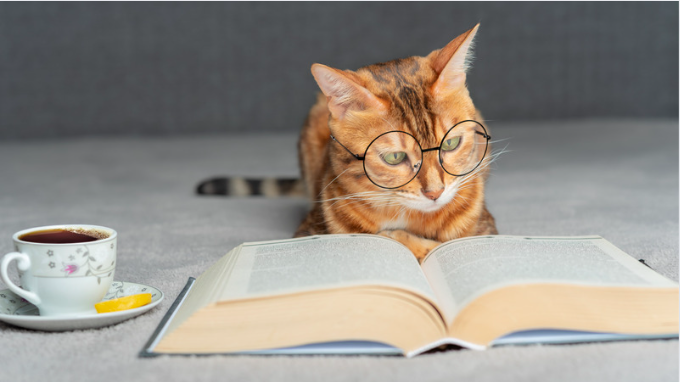
Clever Cats: Breeds That Learn Fast
Cats have always fascinated us with their agility, independence, and sometimes enigmatic behavior. Among the vast array of feline breeds, some stand out for their remarkable intelligence and ability to learn quickly.
In this article, we will delve into the world of these exceptional cat breeds, exploring their unique characteristics, training capabilities, and what makes them such quick learners.
Whether you’re a seasoned cat owner or considering adopting a new feline friend, this comprehensive guide will help you understand the breeds that are not only intelligent but also a joy to train.
Why Intelligence Matters in Cats
Understanding Feline Intelligence
Feline intelligence is a multi-faceted trait that encompasses problem-solving abilities, social learning, and adaptability. Unlike dogs, cats often showcase their intelligence in more subtle ways, such as manipulating objects to get what they want or learning routines and commands.
Benefits of Owning Intelligent Cats
Owning an intelligent cat comes with several benefits. These cats are more interactive and engaging, making them excellent companions. They can learn tricks, follow commands, and even understand basic household rules, which makes living with them more enjoyable and less challenging.
Top Cat Breeds Known for Their Intelligence
Abyssinian
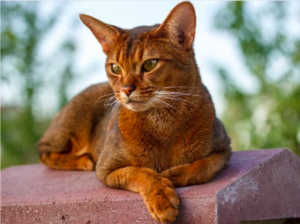
Overview
The Abyssinian is often hailed as one of the smartest cat breeds. Known for their curiosity and playful nature, Abyssinians are quick learners who thrive on mental stimulation.
Training and Activities
Abyssinians are highly trainable and enjoy interactive toys and puzzle feeders. They can learn tricks such as fetching and even walking on a leash. Their love for heights means they appreciate cat trees and climbing structures.
Siamese
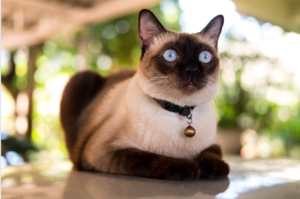
Overview
Siamese cats are not only intelligent but also highly vocal and sociable. They form strong bonds with their owners and are always eager to engage in activities.
Training and Activities
Siamese cats are quick to learn tricks and commands. They enjoy interactive play and can be trained to perform simple tasks like opening doors or retrieving items. Their vocal nature also makes them responsive to verbal cues.
Bengal
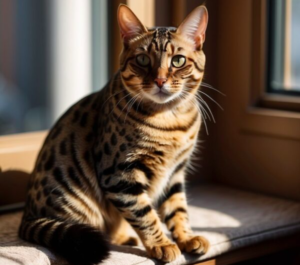
Overview
Bengals are known for their striking appearance and high energy levels. Their intelligence is reflected in their ability to solve problems and learn complex tasks.
Training and Activities
Bengals enjoy activities that challenge their minds, such as agility courses and puzzle toys. They can be trained to walk on a leash and perform tricks. Providing them with interactive playtime helps in channeling their energy positively.
Burmese
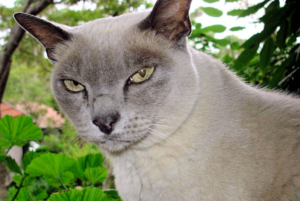
Overview
Burmese cats are affectionate, people-oriented, and intelligent. They enjoy being involved in family activities and can be trained to follow various commands.
Training and Activities
Burmese cats are quick learners and respond well to positive reinforcement. They enjoy learning tricks, playing fetch, and interactive games that stimulate their minds.
Scottish Fold
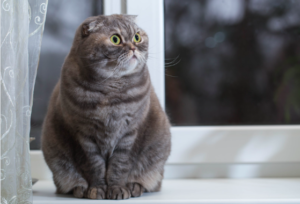
Overview
Scottish Folds are known for their distinctive folded ears and sweet demeanor. Despite their calm appearance, they are intelligent and can learn quickly.
Training and Activities
Scottish Folds enjoy interactive toys and games. They can learn tricks and commands and appreciate routines that keep their minds engaged.
Training Tips for Intelligent Cats
Start Early
Begin training your cat as early as possible. Kittens are more receptive to learning new behaviors and routines.
Use Positive Reinforcement
Reward your cat with treats, praise, or playtime whenever they successfully perform a desired behavior. Positive reinforcement strengthens the association between the action and the reward.
Keep Sessions Short and Fun
Cats have shorter attention spans than dogs, so keep training sessions brief and enjoyable. Incorporate playtime to make learning fun for your cat.
Be Patient and Consistent
Patience and consistency are key when training cats. Repeat commands and routines regularly, and avoid punishing your cat for mistakes. Consistency helps reinforce learning and builds trust.
Challenges of Training Intelligent Cats
Independence and Stubbornness
Intelligent cats can sometimes be independent and stubborn. They might choose to ignore commands if they are not in the mood, so it’s important to understand their behavior and work with it.
Need for Mental Stimulation
Highly intelligent cats require constant mental stimulation. Boredom can lead to behavioral issues, so ensure they have plenty of toys, activities, and interaction to keep their minds engaged.
Managing High Energy Levels
Breeds like Bengals have high energy levels that need to be managed. Providing them with enough physical and mental exercise is crucial to prevent destructive behavior.
Living with Intelligent Cats
Creating an Enriched Environment
An enriched environment is essential for intelligent cats. This includes a variety of toys, climbing structures, scratching posts, and interactive feeders to keep them stimulated.
Social Interaction
Intelligent cats thrive on social interaction. Spend quality time playing, training, and simply bonding with your cat to ensure they feel valued and engaged.
Understanding Their Needs
Each intelligent breed has its own unique needs and preferences. Understanding these and catering to them will help you build a strong and positive relationship with your cat.
Conclusion
Owning an intelligent cat can be an incredibly rewarding experience. These quick learners bring joy, challenge, and companionship to their owners. By understanding their unique characteristics and providing the right environment and training, you can foster a deep and fulfilling relationship with your feline friend.
Whether you choose an Abyssinian, Siamese, Bengal, Burmese, or Scottish Fold, you’re sure to enjoy the remarkable intelligence and personality they bring into your home.
Frequently Asked Questions (FAQs)
What makes a cat breed intelligent?
Intelligent cat breeds often show high levels of problem-solving abilities, adaptability, and social learning. They can quickly learn commands, tricks, and routines.
Can all cats be trained?
While some breeds are more receptive to training than others, all cats can be trained to some extent. Patience, consistency, and positive reinforcement are key to successful training.
What are the best toys for intelligent cats?
Interactive toys, puzzle feeders, and climbing structures are ideal for intelligent cats. These toys provide mental stimulation and keep them engaged.
How do I keep my intelligent cat from getting bored?
Provide a variety of toys, engage in regular playtime, and introduce new activities regularly. Rotating toys and creating an enriched environment also help prevent boredom.
Are intelligent cats more difficult to care for?
Intelligent cats can be more demanding in terms of mental stimulation and interaction. However, with the right approach and environment, they can be delightful companions.
We appreciate you for taking the time to read this article!
Finally, we hope you found this article interesting? And what do you think about ”Clever Cats: Breeds That Learn Fast!?”
Please feel free to share or inform your friends about this article and this site, thanks!
And let us know if you observe something that isn’t quite right.
Cats
The Enchanting Scottish Fold: A Guide to the Adorable Feline with Folded Ears
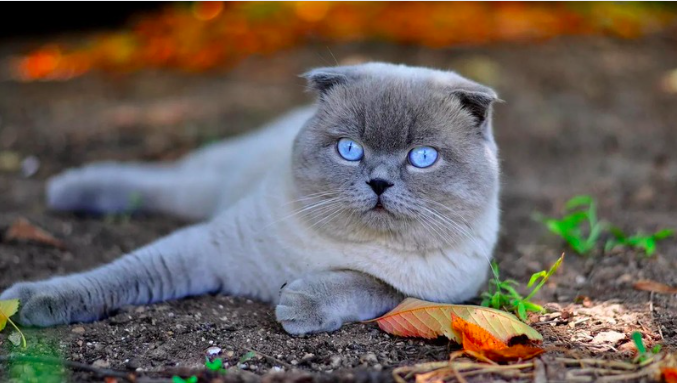
The Enchanting Scottish Fold: A Guide to the Adorable Feline with Folded Ears
Welcome to the world of the Scottish Fold cat, where charm and curiosity meet in an irresistibly adorable package. With their distinctive folded ears and sweet expression, Scottish Folds have captured the hearts of cat lovers around the world. Originally hailing from Scotland, these cats are known for their gentle demeanor, playful nature, and loving personality.
In this comprehensive guide, we will delve into the fascinating world of Scottish Fold cats, exploring their history, physical characteristics, personality traits, and care requirements. Whether you’re a seasoned cat owner or considering adding a feline friend to your family, the Scottish Fold’s unique charm and affectionate nature make them a delightful addition to any home. Join us as we unravel the enchanting tale of the Scottish Fold cat and discover why they are such beloved companions.
Fold
Overview
The Scottish Fold cat is a charming and distinctive breed known for its unique folded ears and sweet expression. Originating from Scotland in the 1960s, these cats have captured the hearts of many with their endearing appearance and affectionate nature. Scottish Folds are known for their gentle and loving temperament, making them wonderful companions for families and individuals alike.
History and Origins
The Scottish Fold breed traces its roots back to a white barn cat named Susie, who was found in Scotland in the early 1960s. Susie had a unique genetic mutation that caused her ears to fold forward, giving her an owl-like appearance. This trait was passed down to her kittens, and thus, the Scottish Fold breed was born. The breed quickly gained popularity for its distinctive look and friendly demeanor, and it was officially recognized by cat registries in the 1970s.
Physical Characteristics
- Folded Ears: The most distinctive feature of the Scottish Fold is its folded ears, which give the cat a sweet and owl-like appearance. Not all Scottish Folds have folded ears; some may have straight ears, known as “straights,” which are also common in the breed.
- Coat and Colors: Scottish Folds can have either a short or long coat, both of which are dense and plush. They come in a variety of colors and patterns, including tabby, tortoiseshell, and solid colors like white, black, and blue.
- Body Structure: Scottish Folds are medium-sized cats with a rounded appearance. They have sturdy bodies, round faces, and large, expressive eyes that give them a sweet and gentle expression.
Personality and Behavior
Scottish Folds are known for their calm and laid-back demeanor. They are affectionate cats that enjoy being around people and are often described as “lap cats” due to their love of cuddling. They are also known for their playful nature and enjoy interactive toys and games. Scottish Folds are generally good with children and other pets, making them a great choice for families.

Health and Care
- Ear Care: Due to their folded ears, Scottish Folds may be prone to ear infections. It’s important to regularly check and clean their ears to prevent issues.
- Grooming: Scottish Folds have dense coats that require regular grooming to prevent matting and tangling. Weekly brushing is usually sufficient to keep their coat in good condition.
- Health Concerns: Scottish Folds are generally healthy, but they may be prone to certain genetic conditions, including a skeletal disorder known as osteochondrodysplasia. Responsible breeding practices can help minimize the risk of these health issues.
Training and Activities
Scottish Folds are intelligent cats that can be trained to perform tricks and commands. They enjoy interactive play and benefit from toys that stimulate their minds and bodies. Providing them with scratching posts and other outlets for their natural behaviors can help keep them happy and healthy.
Compatibility with Families and Other Pets
Scottish Folds are known for their gentle and affectionate nature, making them great companions for families. They are good with children and other pets, including dogs, and can adapt well to different environments. Their loving and sociable nature makes them a popular choice for households looking for a friendly and affectionate pet.
Conclusion
The Scottish Fold cat is a unique and charming breed known for its folded ears and sweet expression. With their gentle demeanor and affectionate nature, Scottish Folds make wonderful companions for families and individuals alike. Whether you’re looking for a lap cat to cuddle with or a playful friend to keep you entertained, the Scottish Fold cat is sure to bring joy and companionship to your home.
FAQs about Scottish Fold Cats
Why do Scottish Folds have folded ears?
Scottish Folds have a genetic mutation that affects the cartilage in their ears, causing them to fold forward. This unique trait gives them their distinctive appearance.
Are Scottish Folds prone to ear problems due to their folded ears?
Yes, Scottish Folds may be more prone to ear infections due to the fold in their ears, which can trap dirt and moisture. Regular cleaning and monitoring of their ears can help prevent issues.
Do Scottish Folds have any health issues associated with their folded ears?
Scottish Folds may be prone to a condition called osteochondrodysplasia, which affects the development of their cartilage and bones. Responsible breeding practices can help reduce the risk of this condition.
Are Scottish Folds good with children and other pets?
Scottish Folds are known for their gentle and friendly nature, making them good companions for families with children and other pets. They enjoy socializing and being part of the family.
Do Scottish Folds require a lot of grooming?
Scottish Folds have dense coats that require regular grooming to prevent matting and tangles. Weekly brushing is recommended to keep their coat in good condition.
We appreciate you for taking the time to read this article!
Finally, we hope you found this article interesting? And what do you think about ”The Enchanting Scottish Fold: A Guide to the Adorable Feline with Folded Ears!?”
Please feel free to share or inform your friends about this article and this site, thanks!
And let us know if you observe something that isn’t quite right.
Cats
The Enchanting Burmese Cat: Affectionate, Playful, and Loyal
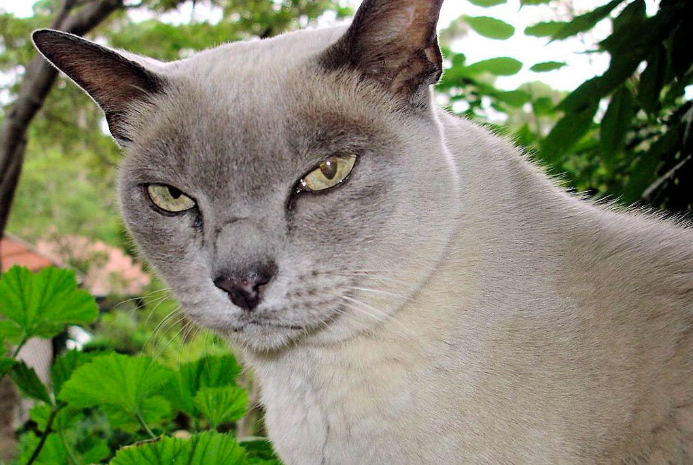
The Enchanting Burmese Cat: Affectionate, Playful, and Loyal
Enter the world of the Burmese cat, where elegance meets affection in a charming feline companion. Originating from the temples of Burma, these cats have captured the hearts of cat lovers worldwide with their striking appearance and loving nature. With their sleek coats, expressive eyes, and playful demeanor, Burmese cats are not just pets; they are cherished members of the family.
In this comprehensive guide, we delve into the captivating world of Burmese cats, exploring their history, physical characteristics, personality traits, and care requirements. Whether you’re a seasoned cat owner or considering adding a feline friend to your family, the Burmese cat’s unique blend of beauty, intelligence, and affection is sure to captivate you. Join us as we unravel the enchanting tale of the Burmese cat and discover why they are such beloved companions.
Burmese
Overview
The Burmese cat is a breed known for its striking appearance and affectionate nature. Originating from Burma (now Myanmar), these cats are renowned for their sleek, muscular bodies, expressive eyes, and silky coats. Burmese cats are often described as “people-oriented,” as they form strong bonds with their human companions and enjoy being part of the family. Their playful and curious nature makes them delightful companions for both children and adults alike.
History and Origins
The history of the Burmese cat can be traced back to ancient Burma, where they were considered sacred and kept by monks in temples. They were later brought to the West in the early 20th century and quickly gained popularity for their striking appearance and affectionate personality. The breed has since become a favorite among cat enthusiasts worldwide, known for its loving and loyal nature.
Physical Characteristics
- Coat and Colors: Burmese cats have short, sleek coats that lie close to the body. They come in a variety of colors, including sable, champagne, blue, and platinum. The coat is soft and silky to the touch, adding to the breed’s overall charm.
- Body Structure: Burmese cats are medium-sized with a muscular build. They have rounded heads, large, expressive eyes, and short, straight noses. Their compact bodies give them a sturdy appearance, and they move with grace and agility.
- Eyes and Ears: Their eyes are one of their most striking features, being large, expressive, and usually a deep, rich color that complements their coat. Their ears are medium-sized, slightly rounded at the tips, and set wide apart on the head.
Personality and Behavior
Burmese cats are known for their affectionate and sociable nature. They are often described as “dog-like” due to their tendency to follow their owners around the house and seek out human companionship. They are also highly intelligent and enjoy interactive play, making them great companions for families with children or other pets.
In addition to their affectionate nature, Burmese cats are also known for their vocalizations. They have a soft, sweet voice that they use to communicate with their owners, often engaging in “conversations” and expressing their needs and desires.

Health and Care
- Grooming: Burmese cats have short coats that require minimal grooming. Weekly brushing is usually sufficient to remove loose hair and keep their coat shiny. They also benefit from regular dental care to prevent oral health issues.
- Diet: A high-quality, balanced diet is essential for maintaining the health and vitality of Burmese cats. They should be fed a diet that is appropriate for their age, size, and activity level to ensure they receive the nutrients they need.
- Health Concerns: Burmese cats are generally healthy, but they can be prone to certain genetic conditions such as hypertrophic cardiomyopathy (HCM) and diabetes. Regular veterinary check-ups and a healthy diet can help manage these risks.
Training and Activities
Burmese cats are intelligent and can be trained to perform various tricks and commands. They enjoy interactive play and thrive on mental stimulation. Providing them with toys, puzzle feeders, and opportunities for play can help keep them entertained and prevent boredom.
Compatibility with Families and Other Pets
Burmese cats are known for their loving and social nature, making them great companions for families. They get along well with children and other pets, including dogs, as long as they are properly introduced. Their affectionate demeanor and playful nature make them a popular choice for households looking for a friendly and engaging pet.
Conclusion
The Burmese cat is a breed beloved for its affectionate nature, striking appearance, and playful personality. Whether you are looking for a loyal companion or a playful friend, the Burmese cat is sure to bring joy and warmth to your home. With their loving nature and sociable demeanor, Burmese cats make wonderful pets for families and individuals alike, enriching their lives with their presence and affection.
FAQs about Burmese Cats
What is the temperament of a Burmese cat like?
Burmese cats are known for their affectionate and social nature. They are often described as “dog-like” due to their loyalty and tendency to follow their owners around the house. They enjoy being involved in family activities and form strong bonds with their human companions.
Are Burmese cats good with children and other pets?
Yes, Burmese cats are generally good with children and other pets. They are playful and enjoy interactive play, making them great companions for families with children. They also get along well with other pets, including dogs, especially if they are introduced properly.
Do Burmese cats require a lot of grooming?
Burmese cats have short, sleek coats that require minimal grooming. Weekly brushing is usually sufficient to remove loose hair and keep their coat shiny. They also benefit from regular dental care to prevent oral health issues.
Are Burmese cats vocal?
Burmese cats are known for their soft, sweet voice, but they are not excessively vocal. They use their voice to communicate with their owners, often engaging in “conversations” and expressing their needs and desires.
What kind of environment is best for a Burmese cat?
Burmese cats thrive in environments where they have plenty of opportunities for play and interaction. They enjoy being part of the family and should have access to toys, scratching posts, and other enrichment activities. They also enjoy having access to outdoor enclosures or safe outdoor spaces where they can explore and indulge their natural instincts.
We appreciate you for taking the time to read this article!
Finally, we hope you found this article interesting? And what do you think about ”The Enchanting Burmese Cat: Affectionate, Playful, and Loyal!?”
Please feel free to share or inform your friends about this article and this site, thanks!
And let us know if you observe something that isn’t quite right.
-

 Pet Care2 years ago
Pet Care2 years agoThe Best Dog Collars For 2022
-

 Dogs2 years ago
Dogs2 years agoBichon Frise: The Happy, Playful, and Cuddly Companion
-

 Trending Pet Stories1 year ago
Trending Pet Stories1 year ago2023 ‘World’s Ugliest Dog’ Winner: Scooter’s Tale of Resilience
-

 Animals2 years ago
Animals2 years agoAre There Animals Having Down Syndrome?
-

 Pets2 years ago
Pets2 years agoThe Fascinating World Of The Red Chameleon
-

 Dogs2 years ago
Dogs2 years agoTop 10 Most Popular Dog Breeds According To AKC.
-

 Dogs2 years ago
Dogs2 years ago21 Dog Breeds That Resemble Bears Or Teddy Bears!
-

 Dogs2 years ago
Dogs2 years agoEskimo Dogs from Canada – What Are They? – Find Out!


